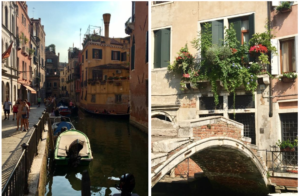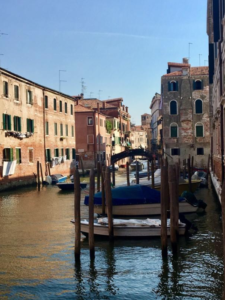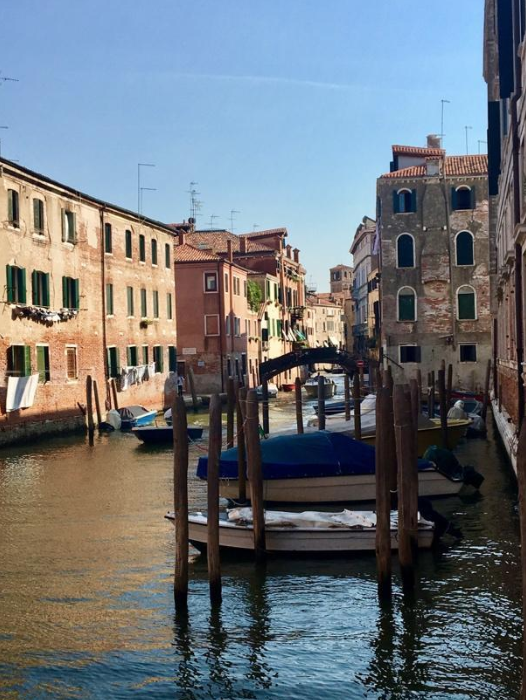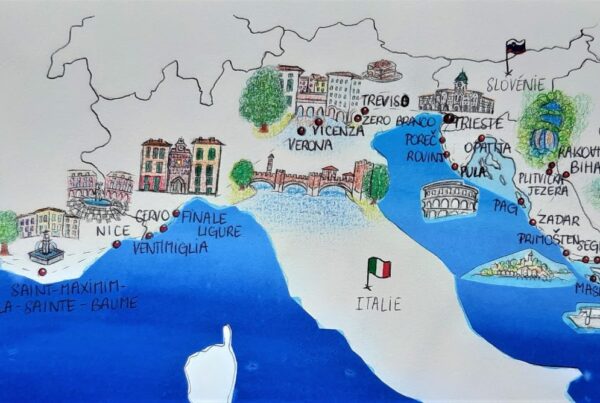Georgia Yew
There are many guidebooks on where to go, what to eat and what to do when you get to Venice. All of them – if not most of them – insist that you must go to Piazza San Marco, San Marco Basilica, Palazzo Ducale and eat your way through a whole line of restaurants for the “finest Italian cuisine.” Others suggest comprehensive one-day itineraries to see it all while elsewhere, hordes of tourists swarm through the city in their bid to complete the typical tourist circuit. And yet, I always found myself questioning whether travelling was all about seeing everything there is to see. Was travelling just about ticking off on my guidebook checklist? Would that truly give me a sense of fulfilment and gratification?
For the first time, I was in the driver’s seat when it came to decision-making and trip-planning. And to this end, I grappled constantly with these questions as I struggled to make sense of what travelling meant to me. Ultimately, I settled on a vision of how I would enjoy my first independent trip to Italy: I would focus more on enjoying the sights as they were, rather than on trying to go to every famous monument. Looking back, I realised that beyond visiting all the main tourist attractions, I enjoyed walking in the small quiet streets.
Venice is often hailed as the ultimate tourist destination. Its grand cathedral, art galleries, and famed canals are some of the distinct features that make it so attractive. Yet, it was only as I weaved through the narrow streets that the beauty of Venice shone. Unlike the grand facades of the bigger important buildings along the wider canal banks, the sights accessible by the alleyways were more modest. It is the unpretentiousness and simplicity that made this side of Venice so alluring. The warm and simple palette of brick reds, mustard yellows and creams of Venetian houses blended to form a harmonious image, while their delicate balconies overflowing with creeper plants. This scenery is completed by the little boats that line the jade waterways running parallel to the houses. Best of all, these streets granted a unique glimpse of Venetian life that walking along the main streets would not. These walkways gave way to small courtyards where children played and adults relaxed and dined in trattorias. Here, I could make out the local Venetian dialect (as pointed out by my friend) from boys teasing each other and couples enjoying their night out. These observations were a sobering reminder that Venice was not just a tourist hub but also the homes of many people. This made me more sensitive to the fact that as a visitor, I should tread carefully and lightly through the city. I could only wonder whether other people felt the same as I squeezed past other tourists along the congested Rialto Bridge.

A classic Venetian street along the canal and a balcony overflowing with greenery. Photos by Ester Molinaroli.
These simple yet quintessential features of Venice were transformed as dusk fell. One by one, the street lamps lit up and cast a warm glow that illuminated the small streets. Suddenly, the scenery was transformed and the same streets that I had walked through before were now bustling with an even livelier atmosphere. Moreover, the streets were not as cluttered as they were in the morning for most tourists begin to leave for the mainland. During this time, you could take a short Gondola ride across the river for less than 5 euros to get a taste of what it is like to ride on one. Taking one in the morning or afternoon grants a short and pleasant view of Venice while taking one at night proves to be an adventure. In my experience of having nothing more but a dimly lit lantern and the moonlight, I felt like I was part of some clandestine operation as I glided across the wide canal towards the other bank.

The crumbling facades that add to Venice’s rustic charm. Photo by Ester Molinaroli.
For a traveller seeking this special side of Venice, I would highly recommend signing up for a free walking tour by locals who wish to share their knowledge of their city. These budget-friendly walking tours are a fantastic opportunity to listen to personal stories and gain nuggets of interesting facts concerning the history of local inhabitants. Often, the walking guides share bits of historical or architectural knowledge and are open to answering questions. Travellers can also take an afternoon off to simply get “lost” in Venice by walking through the city without a set direction or itinerary. This can also be an opportunity to seek out a nice cafe or bar to kick back and relax with a cappuccino and a book. Those who are lucky may even get to see an empty San Marco Piazza after dark, which is a significant change from its ever-crowded state. Hence, I suggest staying in Venice for more than a day to truly explore the city and experience its charm beyond the main touristic areas.
Ultimately, the small streets that were a means to escape from the swarms of people became the best insight to another side of Venice, away from the cacophony of haggling vendors and waves of tourists. Perhaps the charm and allure of Venice lay not in its architectural and historical marvels, but in the plain old alleyways that held the city together.
Georgia Yew is a first-year Euram student and Staff Writer for the Travel Section of the Sundial. She is from Singapore and currently lives in Reims, France. Apart from being an avid traveller, Georgia loves interacting with local communities and is keen to capture the imagination of her readers through her original stories.
Other posts that may interest you:
- The Trouble with ‘Ecocide’
- Carbon dioxide removal – hit or miss?
- Local Victories for Turkish Opposition — A Sign of Hope?
- Are France and Japan a Mismatch Made in Heaven?
- A Reflection on Dark Tourism
Discover more from The Sundial Press
Subscribe to get the latest posts sent to your email.




